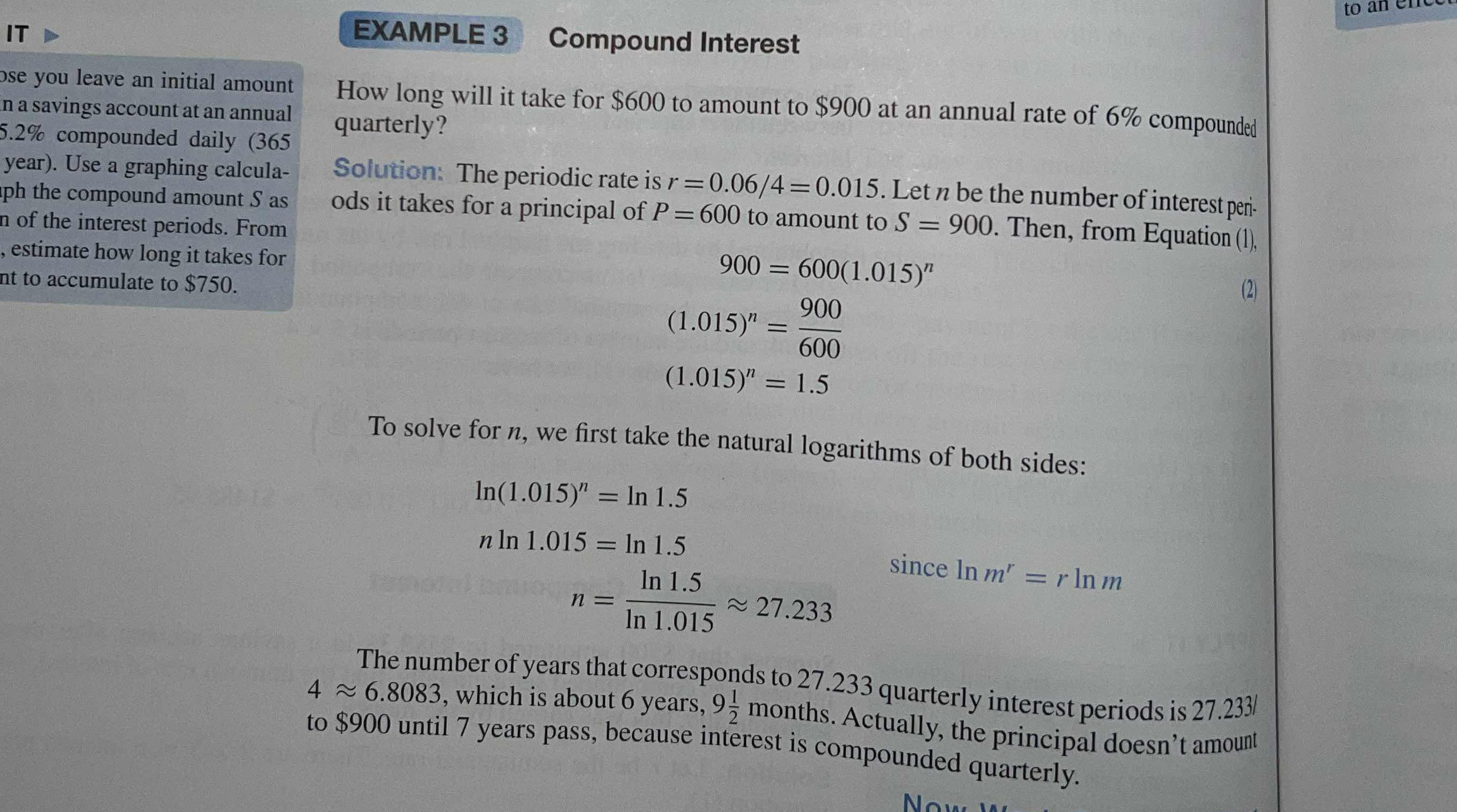How long will it take for $600 to amount to $900 at an annual rate of 6% compounded quarterly?

Understand the Problem
The question asks how long it will take an initial investment of $600 to grow to $900 at an annual interest rate of 6%, compounded quarterly. The provided solution demonstrates the step-by-step calculation using the compound interest formula and natural logarithms to solve for the number of periods.
Answer
Approximately 6.8083 years or $n \approx 27.233$ quarters.
Answer for screen readers
Approximately 6.8083 years, or about 6 years and 9.7 months. $n \approx 27.233$ quarters.
Steps to Solve
-
Calculate the periodic interest rate The annual interest rate is 6%, and it's compounded quarterly, so we divide the annual rate by 4: $r = 0.06/4 = 0.015$
-
Set up the compound interest formula We want to find the number of periods, $n$, it takes for an initial investment of $P = 600$ to grow to $S = 900$. The compound interest formula is: $S = P(1 + r)^n$ In our case: $900 = 600(1 + 0.015)^n$
-
Isolate the exponential term Divide both sides by 600: $(1.015)^n = 900/600$ $(1.015)^n = 1.5$
-
Take the natural logarithm of both sides To solve for $n$, we take the natural logarithm (ln) of both sides: $ln(1.015)^n = ln(1.5)$
-
Use the logarithm power rule Apply the power rule of logarithms, which states that $ln(a^b) = b \cdot ln(a)$: $n \cdot ln(1.015) = ln(1.5)$
-
Solve for n Divide both sides by $ln(1.015)$: $n = \frac{ln(1.5)}{ln(1.015)}$
-
Calculate the value of n $n \approx 27.233$ This is the number of quarters.
-
Convert the number of quarters to years Divide the number of quarters by 4 to find the number of years: $Years = 27.233 / 4 \approx 6.8083$ years
-
Convert the decimal part of years into months $0.8083 * 12 \approx 9.7$ months. So approximately 6 years and 9.7 months are required
Approximately 6.8083 years, or about 6 years and 9.7 months. $n \approx 27.233$ quarters.
More Information
The problem demonstrates how compound interest works and how to calculate the time it takes for an investment to grow to a specific amount. Compounding quarterly means that the interest is calculated and added to the principal four times a year.
Tips
A common mistake is forgetting to divide the annual interest rate by the number of compounding periods per year (in this case, 4 for quarterly).
Another common mistake is failing to convert the number of compounding periods to years at the end of the calculation. The value of $n$ represents the number of quarters, not years.
AI-generated content may contain errors. Please verify critical information